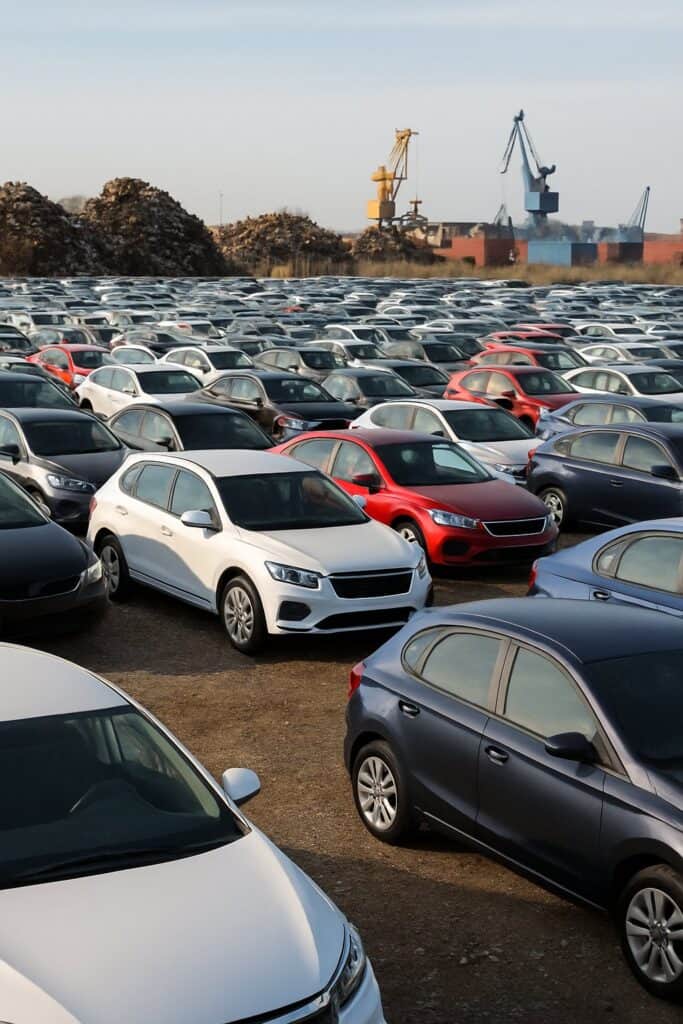What Happens to Cars That Never Get Sold? Inside Dealership Secrets
Picture this: you drive past your local dealership and spot the same bright red pickup truck parked in the exact spot for months. At some point, you wonder if it’s just part of the scenery now.
Every year, thousands of brand new cars linger on dealer lots way longer than anyone planned, but they don’t just disappear.

Most of these vehicles eventually find owners, though not always through the usual sales process. Some get deep discounts, others turn into loaner cars, and plenty take unexpected detours before someone finally drives them home.
Let’s walk through what really happens to these unsold cars. We’ll go from the first tricks dealers use to move slow inventory all the way to the odd destinations these vehicles sometimes end up.
Along the way, you’ll see why this whole process creates some of the best opportunities for sharp car shoppers who know where to poke around.
Why Some Cars Stay Unsold
Several things conspire to keep new vehicles sitting on dealer lots longer than anyone wants. Market trends, dealer missteps, and timing all play their part in creating cars that remain unsold for extended periods.
Market Demand and Customer Preferences
We’ve all seen a car company gamble on a certain style or feature, only to watch customers ignore those vehicles completely. It happens more than you think.
Unpopular combinations drive dealers nuts. Maybe a truck’s got good bones, but it’s stuck with an odd color and cloth seats when everyone wants leather. That thing’s not going anywhere. Vehicles with less popular options or trim combinations just gather dust while similar ones disappear.
Customer tastes shift faster than automakers can keep up. Gas prices jump, and suddenly those big SUVs sit untouched. If the economy gets shaky, luxury models start piling up.
Regional preferences play a big role. A convertible that’s hot in California might not move at all in Minnesota. Sometimes dealers order inventory that just doesn’t fit their local crowd.
The auto business tries to run on predictions, but customers love to surprise everyone.
Overstocking and Local Inventory Missteps
Dealers have to balance inventory carefully. Order too few cars, and you lose sales. Order too many, and you end up paying interest on cars that just sit.
Seasonal miscalculations hit dealers all the time. Sports cars meant for spring sometimes arrive late, or convertibles show up right before winter. Timing feels like a cruel joke.
Some dealers overstock popular models, assuming demand will stay hot. But when the market shifts, they’re left with a pile of the wrong vehicles.
Local market misreads mess things up too. A dealer might stock trucks for construction workers just as the building boom ends. Or maybe they order family sedans when everyone really wants crossovers.
Manufacturers sometimes force dealers to take slow-selling models just to get access to the hot ones. It’s not always a choice.
Pricing, Timing, and Model Changes
Timing can kill a car sale faster than anything else. Model year transitions create some of the biggest headaches for dealers.
Nobody wants last year’s model when the new one just hit the lot, even if there aren’t many changes. Every fall, dealerships scramble to clear out previous model year inventory.
Pricing mistakes make things worse. If a car’s priced too high for its market, it just becomes a lot ornament. Dealers sometimes hold out for too long, hoping the right buyer will show up.
Manufacturer incentives mess with timing too. Customers get wise and wait for rebates or special deals, making regular-priced cars even harder to sell.
New model announcements can instantly kill interest in current inventory. When automakers reveal a redesign for next year, current models suddenly lose their appeal.
Interest rate changes can make financing too expensive for some buyers, pushing those cars even further out of reach.
How Dealerships Try to Sell Slow-Moving Cars
When cars linger on the lot month after month, dealerships start getting creative. They’ll offer everything from big discounts to flashy lease deals, and sometimes even swap inventory with other dealers.
Incentives and Deep Discounts
The first move is always the classic discount. We’re not talking about a couple hundred bucks off. Dealers will chop thousands off the sticker price for slow-moving cars.
They know that every month a car sits unsold costs them interest on floor plan financing. Taking a smaller profit beats watching those carrying costs pile up.
Cashback offers get wild on these vehicles. Manufacturers and dealers sometimes team up to offer $3,000, $5,000, or even $10,000 back on certain models. They’ll throw in extras like extended warranties or premium sound systems to sweeten the deal.
For dealers, a $5,000 discount today is better than paying six more months of interest. These deep discounts can turn a so-so deal into a genuinely good one for shoppers who time it right.
Lease Deals and Financing Offers
When cash discounts don’t cut it, dealerships shift to making the monthly payment look irresistible. Lease deals on slow sellers can get pretty tempting.
You’ll see super low money factors (that’s lease-speak for interest rates) and high residual values to bring payments way down. Suddenly, a $40,000 SUV that usually leases for $450 a month might go for $299.
Financing options get creative too. Zero percent APR deals pop up on cars that have been gathering dust. These can save buyers thousands in interest, sometimes making them a better deal than straight cash discounts.
Selling cars through attractive financing just makes sense for dealers. They’d rather move a car with a creative deal than let it hog valuable lot space.
Dealer Trades and Swaps
Sometimes the problem isn’t the car, but its location. What sits unsold in Minnesota might sell instantly in Arizona.
Dealer trade agreements let franchised dealers swap inventory. That yellow convertible gathering snow in Buffalo might fit right in at a Miami dealership. These swaps happen more than most people realize.
Entire shipments of 4×4 trucks sometimes get redirected from Southern California to Colorado, where demand is higher. Sure, it costs money to transport vehicles, but it’s usually better than selling at auction prices.
New cars lose their shine the longer they sit, so dealers work together to get the right vehicles into the right markets. A dealer trade can turn a slow seller into a quick win, and the customer finally gets the color and options they’ve been hunting for.
What Happens When Cars Still Don’t Sell
When dealerships run out of regular sales tricks, they turn to three main options. They convert unsold inventory into loaner vehicles, send cars to wholesale auctions, or sell big batches to fleet buyers.
Loaner and Demo Car Life
We’ve all had our car in the shop and needed a loaner. That’s where those stubborn unsold cars get a second life. Many car dealers keep a small fleet of loaner or demo cars, usually older inventory models that didn’t sell quickly.
Dealerships turn slow-moving inventory into loaner vehicles for service customers. It’s a win for everyone. Customers get a car to drive, and dealers finally put those vehicles to work.
Demo cars play a different role. Sales teams use them for test drives and to show off features. That loaded pickup nobody wanted? Now it’s the perfect demo for showing off the latest gadgets.
Eventually, these cars head back to the sales floor with “demo” or “loaner” tags. They usually have low miles and have been well maintained, since dealerships rely on them.
Wholesale and Public Auctions
If a car can’t even make it as a loaner, it usually heads to auction. This is where things get interesting. Dealerships may auction the car off to wholesalers, who have their own network of buyers and dealerships.
Wholesale auctions happen out of the public eye. Licensed dealers bid on cars they think will sell better in their own markets. That brown SUV with zero options might be perfect for a rural dealer who just needs something practical.
Public auctions open the door to regular buyers. Sometimes you’ll find cars with weird color combos or odd option packages that just didn’t fit the original dealer’s customers.
The auction process moves fast. Cars sell at wholesale prices, so buyers can sometimes score a deal. But you’ve got to inspect carefully, since sales are usually final.
Bulk Sales to Fleet Buyers
Some unsold vehicles end up in bulk sales to fleet companies. This is where cars get a new shot at life serving businesses. Cars that don’t get sold at the car dealer will typically be auctioned away to the highest bidder in bulk.
Rental car companies scoop up lots of unsold inventory. They need reliable, affordable cars for their fleets. Models that didn’t excite regular buyers work just fine for vacation rentals or business trips.
Fleet management companies buy cars for corporate clients. Businesses needing work trucks, delivery vehicles, or employee transportation love these deals.
Volume buyers get big discounts. Fleet companies negotiate lower prices since they’re grabbing dozens or even hundreds of vehicles at once. These cars go straight into service, solving the dealership’s problem and filling a business need.
Last Stop: Storage, Scrapping, or Export

When dealers run out of options, unsold cars face three main fates. They might sit in long-term storage, get broken down for parts and recycling, or ship overseas to markets that actually want them.
Automotive Graveyards and Long-Term Storage
We’ve all seen those massive lots filled with thousands of unsold cars sitting under tarps. These automotive graveyards are where many new vehicles end up when dealers run out of room and options.
Car companies lease huge storage facilities, often in desert climates where rust isn’t a concern. Arizona and Nevada host some of the biggest operations.
These lots can hold tens of thousands of vehicles at once. The cost adds up fast.
Storage fees, security, and maintenance create a financial burden that grows every month. Automakers pay around $25-50 per vehicle per month just for basic storage.
These cars don’t sit forever though. We see periodic fire sales when manufacturers decide to dump inventory at rock-bottom prices.
Sometimes they’ll offer these stored vehicles to rental companies or fleet buyers at massive discounts. Weather becomes the enemy over time.
Even in dry climates, seals deteriorate and batteries die. What started as brand new inventory slowly becomes problematic stock that’s harder to move.
Recycling and Salvaging Unwanted Inventory
When storage costs outweigh potential profits, automakers turn to recycling. This isn’t the same as scrapping old cars at the end of their lifecycle, but the process shares similarities.
Valuable materials get harvested first:
- Steel and aluminum from body panels
- Precious metals from catalytic converters
- Copper wiring and electronic components
- Glass and plastic trim pieces
The recycling process for unsold cars is more systematic than regular scrapyard operations. Since these vehicles are complete and undamaged, recovery rates hit 85-95% of materials.
Automakers often partner with specialized facilities that handle new vehicle destruction. These operations must ensure complete destruction to prevent parts from entering gray market channels.
Some manufacturers strip usable parts first. Engine blocks, transmissions, and body panels become service parts for dealerships.
This helps recoup some losses while supporting their parts network.
Exporting to Overseas Markets
Export markets offer the most profitable solution for many unsold cars. Developing countries welcome American vehicles that dealers can’t move domestically.
Popular export destinations include:
- Eastern European countries
- Parts of Africa and South America
- Southeast Asian markets
We see interesting patterns in what gets exported. Smaller cars that struggle in truck-loving America find eager buyers overseas.
Fuel-efficient models become hot commodities in countries with expensive gas. The export process requires modifications for different markets.
Right-hand drive conversions, emissions equipment changes, and safety feature adjustments add costs but create value. Car companies work with specialized export dealers who understand foreign regulations and buyer preferences.
These intermediaries handle shipping logistics and regulatory compliance. Export timing matters too.
Currency fluctuations and trade policies affect profitability. When the dollar weakens, American cars become more attractive to foreign buyers, creating opportunities to clear inventory.
The Impact on Automakers and Dealers
Unsold cars create financial pressure that ripples through the entire auto business. Dealerships pay monthly interest on floor plan loans while automakers adjust production strategies to match real demand.
Financial Pressure of Unsold Inventory
When we look at how dealerships acquire inventory, most use floor plan financing instead of paying cash upfront. This means every car sitting on the lot costs money every single month.
Dealers typically aim to move new vehicles within 90 days. After that, the math gets ugly fast.
The longer a car sits, the more interest piles up and the less profit remains.
Monthly costs add up quickly:
- Interest payments on floor plan loans
- Insurance and storage costs
- Opportunity cost of lot space
- Depreciation as newer models arrive
Car dealers face a double hit when inventory ages. Carrying costs increase, and customer interest drops as people assume something must be wrong with cars that sit too long.
How Floor Plan Financing Shapes the Business
Floor plan financing is the backbone of how dealerships operate. Instead of tying up millions in cash, dealers borrow money to stock their lots and pay it back when cars sell.
This system creates intense pressure to turn inventory fast. Every month a car sits unsold, dealers pay interest that eats into already thin margins.
We’re talking about businesses that often operate on single-digit profit margins. The financing typically works like a credit line.
Dealers add inventory and the loan balance goes up. When they sell a car, they pay off that specific loan portion.
It keeps cash flowing but demands constant sales.
Key aspects of floor plan financing:
- Monthly interest on unsold units
- Credit limits based on dealership size
- Manufacturer incentives tied to inventory turns
- Penalties for aging inventory
This financing model explains why dealers get aggressive with discounts and incentives as cars age on their lots.
Adapting with Just-in-Time Manufacturing
Automakers have learned hard lessons about overproduction. Modern manufacturers increasingly use just-in-time strategies to build what customers actually want rather than flooding dealer lots.
This shift helps both automakers and dealers. Manufacturers avoid the costs of building cars that sit unsold, while dealerships reduce carrying costs and inventory risk.
Benefits of just-in-time production:
- Lower inventory carrying costs
- Reduced waste from unsold models
- Better alignment with market demand
- Faster response to changing preferences
Some automakers now use customer orders to drive production schedules. This approach virtually eliminates truly unsold inventory, though it can mean longer wait times for buyers.
Opportunities for Savvy Car Shoppers
Smart buyers can turn dealerships’ unsold inventory problems into serious savings opportunities. We can save thousands by knowing where to look, what to negotiate, and when to buy.
Finding and Negotiating on Unsold Models
The trick to finding unsold gems is asking the right questions. When we walk onto a lot, we should ask salespeople about cars that have been sitting for more than 70 days.
Most new cars sell within a week, so anything older becomes a negotiation goldmine. We need to look for telltale signs of aging inventory.
Cars parked in back rows or covered with dust are prime candidates. Model years from previous seasons offer the best deals since dealers desperately want them gone before new inventory arrives.
Electric cars often sit longer than gas models because fewer buyers understand them yet. This creates perfect opportunities for us to score deals on cutting-edge technology.
When negotiating, we should mention auction prices directly. Dealers lose money sending cars to wholesale auctions, so they would rather work with us.
We can often negotiate closer to invoice pricing on these forgotten vehicles.
Pros and Cons of Buying Unloved Cars
Pros:
- Save 10-15% compared to popular models
- Full manufacturer warranty still applies
- Brand new condition with zero miles
- Access to latest safety features and tech
Cons:
- Limited color and option choices
- Harder resale value due to unpopular specs
- May lack newest model year improvements
- Fewer financing incentives than current models
We have found that unpopular colors like beige or unusual trim packages often hide exceptional value. Sure, that brown leather might not be our first choice, but saving $5,000 makes it pretty attractive.
Used cars from rental fleets sometimes offer better deals than unloved new cars. We should compare both options before deciding.
Timing Your Purchase for Best Deals
End of model years brings the best opportunities. Dealers start to get anxious around September and October when new model announcements hit.
We can save thousands by negotiating great prices on outgoing inventory. That’s when they really want to move last year’s models.
Holiday weekends create even more pressure. Memorial Day, Labor Day, and year-end clearances force dealers to move metal fast.
If we show up ready with financing and some realistic expectations about what’s actually left on the lot, we’ll have a big advantage.
The 71-day rule works in our favor. After cars sit this long, dealerships become anxious to sell them.
We can use this timeline when we negotiate. Sometimes it’s all about patience.
Winter months traditionally slow sales, especially for SUVs and trucks. Dealers need cash flow, so January through March can be great for buyers willing to wait and pounce on the right deal.
